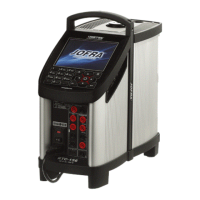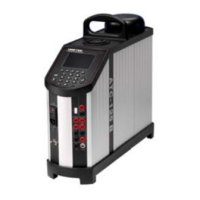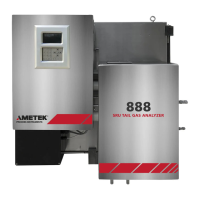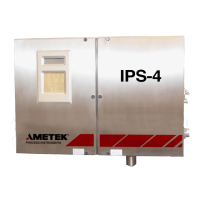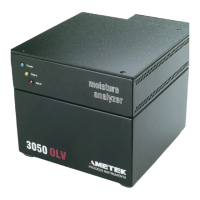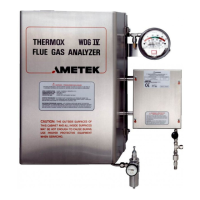105446 06 23-03-2009 11
The oil level rises several centimetres when the
temperature is rising. To stop overflow switch off the
main power and the oil level will decrease.
Carefully wipe off all silicone oil from the sensor under
test to avoid spreading of the silicone oil.
Be careful to select the right oil for the right task. Using
other than the recommended oils might cause damage
to the calibrator or degrade the performance.
Remove excess hot fluid with the outmost care, as it
might be very hot.
Do not attempt to remove hot fluid with the liquid
drainage tube, as it might melt.
About the well, insertion tube and sensor:
The well and the insertion tube must be clean and dry
before use.
Do not use any alkali, acid or ionic fluids in the
aluminium well as it might be damaged.
Scratches and other damage to the insertion tubes
should be avoided by storing the insertion tubes
carefully when not in use.
The insertion tube must never be forced into the well.
The well could be damaged as a result, and the
insertion tube may get stuck.
Before using new insertion tubes for the calibration, the
insertion tubes must be heated up to maximum
temperature – 250°C (482°F) / 320°C (608°F) / 650°C
(1202°F) - for a period of minimum 30 minutes (ATC-
250/320/650 A/B only).
The insertion tube must always be removed from the
calibrator after use.
The humidity in the air may cause corrosion oxidation
on the insertion tube inside the instrument. There is a
risk that the insertion tube may get stuck if this is
allowed to happen.
If the calibrator is to be transported, the insertion tube
must be removed to avoid damage to the instrument.

